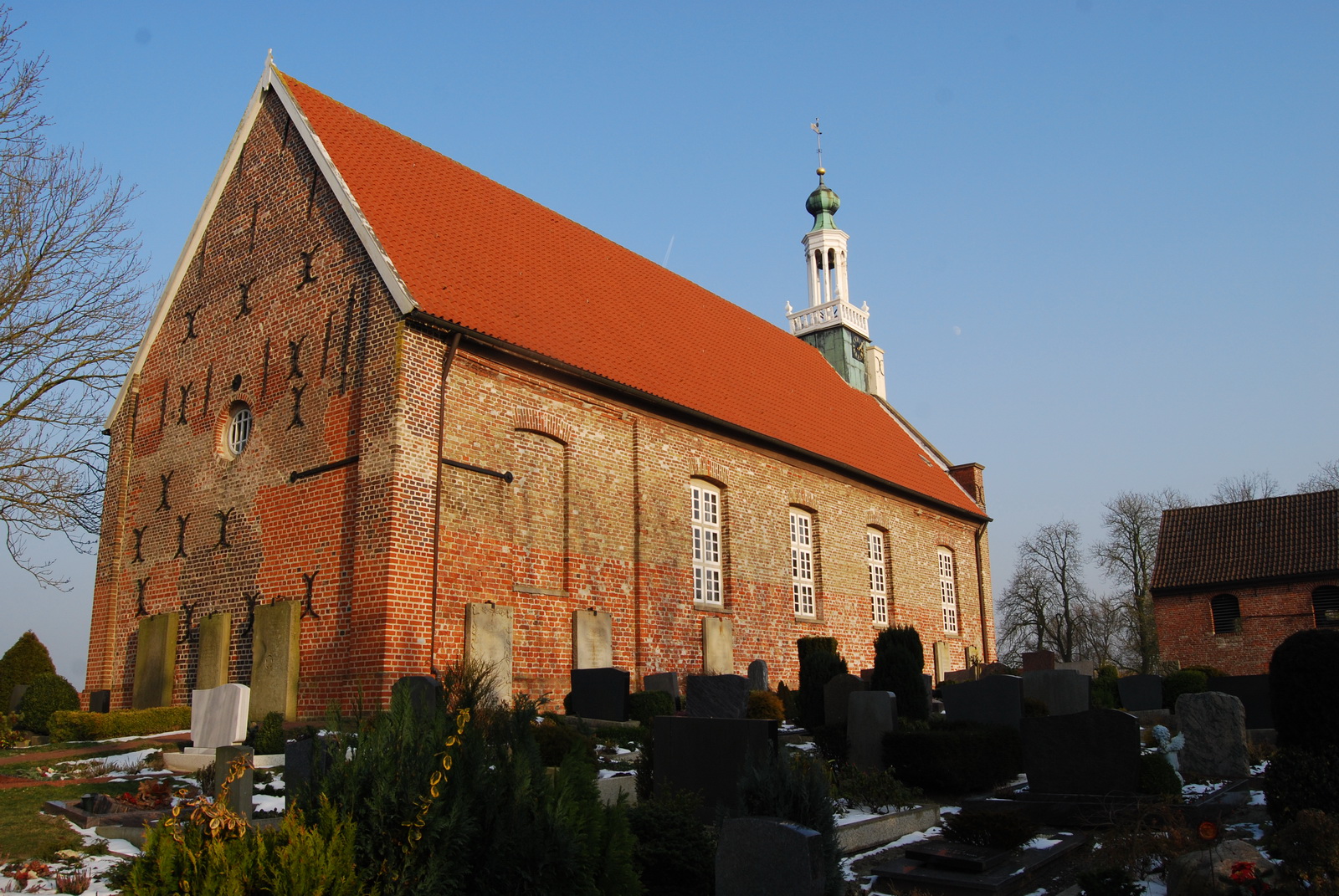Accum, St. Willehad Kirche Accum
| Builder | A. Führer |
|---|---|
| Year | ca. 1963 |
| Period/Style | Neo-Baroque |
| Stops | 14 |
| Keyboards | 2+P |
| Keyaction | tracker/mechanical |
| Tuning | Equal |
The organ at St. Willehad Church in Accum was built by Alfred Führer in 1963, housed in the historical case created by Arp Schnitger in 1705. Accum, first mentioned around 840 by Archbishop Ansgar of Bremen, became known by its current name approximately 500 years ago. The church has served various roles throughout history, including as a fortress during regional conflicts and as the burial site for notable figures like Friesen-Häuptling Lübbe Onneken in 1476 and Tido von Knipens and Inhusen with his wife Eva von Renneberg in 1565. The current St. Willehad Church was constructed in 1719, after previous buildings suffered damage from storm floods.
Arp Schnitger initially built the organ in 1705 for the Accum congregation. Over time, the organ underwent several modifications: Gerhard Janssen Schmid added a new Principal 8’ in 1842, and Johann Claussen Schmid added a new Principal 4’ in 1848. Johann Martin Schmid rebuilt the organ in 1914, using the old case and some of Schnitger's pipes. In 1959, Alfred Führer expanded the organ, and by 1963, he had built a new instrument within the original 1705 case. The organ's disposition features 14 stops across Hauptwerk, Rückpositiv, and Pedal, with technical specifications that include manual and pedal ranges and couplers.
Arp Schnitger initially built the organ in 1705 for the Accum congregation. Over time, the organ underwent several modifications: Gerhard Janssen Schmid added a new Principal 8’ in 1842, and Johann Claussen Schmid added a new Principal 4’ in 1848. Johann Martin Schmid rebuilt the organ in 1914, using the old case and some of Schnitger's pipes. In 1959, Alfred Führer expanded the organ, and by 1963, he had built a new instrument within the original 1705 case. The organ's disposition features 14 stops across Hauptwerk, Rückpositiv, and Pedal, with technical specifications that include manual and pedal ranges and couplers.
| Rückpositiv | Hauptwerk | Pedal |
|---|---|---|
| Gedackt 8’ | Principal 8’ | Subbass 16’ |
| Principal 4’ | Rohrflöte 8’ | Principal 8’ |
| Waldflöte 2’ | Oktave 4’ | Rauschbass 3f. 2’ |
| Quinte 1 1/3’ | Nasat 2 2/3’ | |
| Scharf 3f. 2/3’ | Superoktave 2’ | |
| Mixtur 4–6f. 1 1/3’ |
No Video/Audio samples available.
https://nomine.net/orgel/accum-st-willehad/
 Pipe Organ Map
Pipe Organ Map
